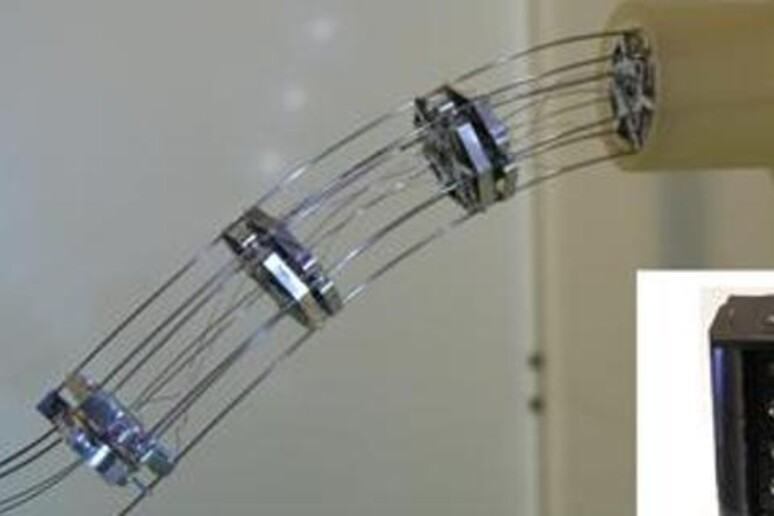The first patent worldwide for a flexible robot has been granted to an Italian prototype developed by a research team at the Genoa-based Italian Institute of Technology (IIT) led by Edoardo Sinibaldi, whose research on the project was published in the scientific journal Plos One in February.
The Scuola Superiore Sant'Anna in Pisa collaborated on the project. The snake-like device, the first "interlaced continuum robot", deploys what's known as a follow-the-leader approach, because as the probe moves, its interlaced design allows its components to proceed one after the other without relying on external supports, enabling it to move around obstacles in difficult places.
Applications for a robot of this kind could be possible in the fields of biomedicine, where it might be able to reach a critical place in a patient's body without causing damage, as well as in outer space, where it might be deployed to repair satellites or other structures that would otherwise be impossible to reach.
"No other instrument is capable of creating a similar trajectory," Sinibaldi told ANSA.
"It's a result that came from reasoning related to symmetry: starting from a mathematical problem we built a physical object," he said. The first models of the probe developed for specific applications could be on the market within the next three to five years.
Byungjeon Kang and Risto Kojcev, doctoral students at the Sant'Anna School of Advanced Studies in Pisa, also worked on the robot, which was developed in the IIT's Centre for Micro-BioRobotics.
The two interlaced structures of the probe were built of a highly resistant and elastic material called nitinol, a metal alloy of nickel and titanium that enables both rigidity and plasticity in movements.
The two flexible tools have "controllable stiffness" which allows each of them to take turns becoming rigid or flexible in order to move forward in a snake-like manner using the entire length of the probe rather than just the tip.
ALL RIGHTS RESERVED © Copyright ANSA











